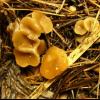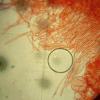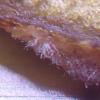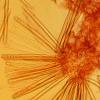
17-12-2025 18:35
 Michel Hairaud
Michel Hairaud
Bonjour à tous/Hi to everyone I am passing along

15-12-2025 15:48
 Danny Newman
Danny Newman
Melanospora cf. lagenaria on old, rotting, fallen

15-12-2025 15:54
 Johan Boonefaes
Johan Boonefaes
Unknown anamorph found on the ground in coastal sa

15-12-2025 21:11
 Hardware Tony
Hardware Tony
Small clavate hairs, negative croziers and IKI bb

15-12-2025 07:09
 Danny Newman
Danny Newman
indet. Rutstroemiaceae sp. on unk. fallen leavesMc

15-12-2025 07:05
 Danny Newman
Danny Newman
Pseudosclerococcum golindoi (det: Zotto)near Cosb

15-12-2025 11:49
 Danny Newman
Danny Newman
ITS sequences from the following two collections B

15-12-2025 12:34
 Danny Newman
Danny Newman
indet. Rhytismataceae on oak leafnear Purchase Roa
Peziza merdeae
Yannick Mourgues,
20-04-2007 21:52
 Bonsoir.
Bonsoir.Et bien... Quand on met un pied dans le monde des ascos, on n'en ressort plus!
Aujourd'hui, ma balade m'a emmené du côté du lac de l'Eychauda (Pelvoux-05). Sur le départ de la rando (alt=1800m), sous les mélèzes, parmi les aiguilles au sol, au bord d'une plaque de neige, un asco que j'ai identifié comme étant Peziza merdeae. Présence de déjections humaines à côté de la pézize.
Quelques données :
Macro:
Fructification diamètre=13mm pour les plus grandes, étalées/discoïdes avec le centre plus ou moins déprimé.
Hyménium lisse de couleur brun-clair ochracé.
Marge lisse.
Excipullum couvert de poils "cotoneux" blanchâtres. donnant un aspect duveteux.
Micro:
Textura angularis.
Spores unisériées elliptiques finement verruqueuses, 17x9 um.
Asques I+, cylindriques à sommet aplati, 260-280x16 um.
Paraphyses de même longueur que les asques et de largeur=4-5um, contenant des granulations, septées, clavées au sommet (l=6-8um).
Poils de l'excipullum lisses, septés, à bout arrondi, 200-400x5 um.
CE QUI ME POSE PROBLEME :
1. Si la micro semble correspondre à cette espèce, je ne trouve pas dans ma documentation mention des poils de l'excipullum. Est-ce normal de trouver ces poils?
2. Même chose pour les paraphyses : je n'ai aucune indication sur elles. Les caractéristiques observées collent-elles avec cette espèce?
Avez-vous des infos sur Peziza merdeae?
Merci de votre aide.
Yannick Mourgues
Yannick Mourgues,
20-04-2007 22:03
Perz Piotr,
20-04-2007 22:05
Re:Peziza merdeae
Dear Yannick
I'm currently writing publication about P.merdae - can you translate your text into english so I can better understand it please ?
Pimpek
I'm currently writing publication about P.merdae - can you translate your text into english so I can better understand it please ?
Pimpek
Christian Lechat,
20-04-2007 22:10

Re:Peziza merdeae
Cheilymenia theleboloides? :)
Perz Piotr,
20-04-2007 22:15
Re:Peziza merdeae
Dear Christian,
neeeee, it IS P.merdae (ascus apex is amyloid !!).
neeeee, it IS P.merdae (ascus apex is amyloid !!).
NC NC,
20-04-2007 22:31
Re:Peziza merdeae
Bonsoir à tous,
Nous avons trouvé (Marc Langlois ) cette Pezize extraordinaire nommée à l'époque : Pezize aux papiers roses!!!
Voir la fiche ascofrance mais attention pour la trouver elle est orthographiée MERDAE et non MERDEAE.
Elle est remarquable par la forme de ses paraphyses voir dessin
et en plus nous avons trouvé des spores de deux types voir photos
Une description plus complete a été faite dans le bulletin mycologique de REIMS (SMR)
Robert
Nous avons trouvé (Marc Langlois ) cette Pezize extraordinaire nommée à l'époque : Pezize aux papiers roses!!!
Voir la fiche ascofrance mais attention pour la trouver elle est orthographiée MERDAE et non MERDEAE.
Elle est remarquable par la forme de ses paraphyses voir dessin
et en plus nous avons trouvé des spores de deux types voir photos
Une description plus complete a été faite dans le bulletin mycologique de REIMS (SMR)
Robert
Gilbert MOYNE,
20-04-2007 22:40
Re:Peziza merdeae
Bizarre ces poils. Pas Cheilymenia si les asques réagissent au Melzer;
Peut-être chercher du côté des pézizes nivales mais je ne sais pas si il y en a à spores verruqueuses.
Pour Peziza merdae, revoir la coupe de la chair, Donadini (DM 36 : 20) donne plusieurs couches différentes. Il ne parle pes de poils.
Pour les paraphyses, il dit: se terminant souvent par deux articles courts, renflés, (7-10 µm), et une crosse fortement épaissie à l'extrémité (7-12 µm)
Peut-être voir aussi côté Peziza moravecii, je n'en ai pas la description mais Donadini cite: excipulum furfuracé, finement tomenteux à subtomenteux. Spores 14-16 x 7-7,5 (ce qui fait un peu petit.)
Pas d'autres idées pour l'instant
Gilbert
Peut-être chercher du côté des pézizes nivales mais je ne sais pas si il y en a à spores verruqueuses.
Pour Peziza merdae, revoir la coupe de la chair, Donadini (DM 36 : 20) donne plusieurs couches différentes. Il ne parle pes de poils.
Pour les paraphyses, il dit: se terminant souvent par deux articles courts, renflés, (7-10 µm), et une crosse fortement épaissie à l'extrémité (7-12 µm)
Peut-être voir aussi côté Peziza moravecii, je n'en ai pas la description mais Donadini cite: excipulum furfuracé, finement tomenteux à subtomenteux. Spores 14-16 x 7-7,5 (ce qui fait un peu petit.)
Pas d'autres idées pour l'instant
Gilbert
Yannick Mourgues,
20-04-2007 22:52

Re:Peziza merdeae
Dear Perz Piotr,
It's difficult for me to translate my text into english because i need a dictionnary for each word...
But i will try to do it tomorrow...
What do you think about paraphyses in Gilbert's message?
I send to the forum my images for microscopy. May be it's better than a long text?
Yannick
It's difficult for me to translate my text into english because i need a dictionnary for each word...
But i will try to do it tomorrow...
What do you think about paraphyses in Gilbert's message?
I send to the forum my images for microscopy. May be it's better than a long text?
Yannick
Perz Piotr,
20-04-2007 22:54
Re:Peziza merdeae
Peziza merdae
Documents mycologique: http://www.mikologia.pl/rozne_pliki/DM1979.zip
Fungi non denandi: http://www.mikologia.pl/rozne_pliki/FND.zip
Fungi Fimicoli Italici: http://www.mikologia.pl/rozne_pliki/FFI.zip
Pimpek
Documents mycologique: http://www.mikologia.pl/rozne_pliki/DM1979.zip
Fungi non denandi: http://www.mikologia.pl/rozne_pliki/FND.zip
Fungi Fimicoli Italici: http://www.mikologia.pl/rozne_pliki/FFI.zip
Pimpek
Yannick Mourgues,
20-04-2007 22:58

Re:Peziza merdeae
Thank's for these documents.
I will read all of this!!!
Yannnick
I will read all of this!!!
Yannnick
Perz Piotr,
20-04-2007 23:04
Re:Peziza merdeae
Peziza merdae MAKROS http://www.mikologia.pl/rozne_pliki/P_Merdae.zip
Yannick Mourgues,
20-04-2007 23:12

Re:Peziza merdae
Same mushroom for what i have seen on your images !!!
Perz Piotr,
20-04-2007 23:17
Re:Peziza merdeae
Peziza merdae SPORES http://www.mikologia.pl/rozne_pliki/spores.zip
Ornamented, H2O 13,64-16,48um x 6,82-7,60um KOH 13,64-14,77um x 5,68-6,82um
with ONE central nucleine H2O 2,35-3,30um, KOH 2,15-2,85um, with many bipolar minute refractive LB's, by immature spo. often TWO bipolar middle-sized LBs. No glycogene regions.
Ornamented, H2O 13,64-16,48um x 6,82-7,60um KOH 13,64-14,77um x 5,68-6,82um
with ONE central nucleine H2O 2,35-3,30um, KOH 2,15-2,85um, with many bipolar minute refractive LB's, by immature spo. often TWO bipolar middle-sized LBs. No glycogene regions.
Perz Piotr,
20-04-2007 23:20
Re:Peziza merdeae
Peziza merdae ASCI (mikros seen by spores - see up).
8-spored, short stipe, arising from croziers.IKI+ only a short operculum H2O turg. 185-210um x 12,36-14,1um, KOH 160-177um x 9,09-9,64um, pars sporifiera H2O turg. 71-85um
8-spored, short stipe, arising from croziers.IKI+ only a short operculum H2O turg. 185-210um x 12,36-14,1um, KOH 160-177um x 9,09-9,64um, pars sporifiera H2O turg. 71-85um
Perz Piotr,
20-04-2007 23:25
Re:Peziza merdeae
Peziza merdae PARAPHYSES: http://www.mikologia.pl/rozne_pliki/paraphyses.zip
Moniliforma ONLY (!!!!!) by fully (!!!!) mature or overmature apo. In matura or immature apos - PARAPHYSES SIMPLE !!.
Multi-septate, often cyrved at tip, with HYALINE vakuoles, KOH-, IKI- KOH or H2O +/- the same: 2,27-2,84um, tip 4,98-9,95um.
By moniliforme, each septe 14-25 x 6-8,5um
Moniliforma ONLY (!!!!!) by fully (!!!!) mature or overmature apo. In matura or immature apos - PARAPHYSES SIMPLE !!.
Multi-septate, often cyrved at tip, with HYALINE vakuoles, KOH-, IKI- KOH or H2O +/- the same: 2,27-2,84um, tip 4,98-9,95um.
By moniliforme, each septe 14-25 x 6-8,5um
Perz Piotr,
20-04-2007 23:32
Re:Peziza merdeae
Peziza merdae GEL: http://www.mikologia.pl/rozne_pliki/gel.zip
Intercellular gel strong KOH+ (yellow) reaction for a long time. Gel also presents between hymenial elements, CB+.Also honey-like amorphous gel between hymenial elements presents (ofen all asci are covered by this gel - they looks like with brown wall) - this gel has no KOH reaction.
Intercellular gel strong KOH+ (yellow) reaction for a long time. Gel also presents between hymenial elements, CB+.Also honey-like amorphous gel between hymenial elements presents (ofen all asci are covered by this gel - they looks like with brown wall) - this gel has no KOH reaction.
Perz Piotr,
20-04-2007 23:42
Re:Peziza merdeae
Peziza merdae - section throught APO: http://www.mikologia.pl/rozne_pliki/apo.zip
Hymenium 230um
Subhymenium 60-70(90)um
textura globulosa (rare angularis), some cells with LB's single cells 4,5-14um
Upper medulla textura globulosa 55-80(100)um, sometimes intermixed with cylindrical cells.
Lower medulla like upper, but much more cylindrical cells.
Both upper+lower together - 1000um
Tx.intricata layer with some (rare) tx.globulosa cells, up to 500um
WARNING. tx.intricata layer is not easy to see cause it is not presents neer margo. Best seen in the middle of fruitbody.
Excipulum textura globulosa, much smaller cells like those in medulla, 400um
Ectal excipulum textura globulosa 18-36um, with hairlike hyphae (rhizoids). A lot of brown gel CB+, KOH+yellow
Harirlike cells (rhizoids) - a lot of rhisoids, long, hairlike cells up to 80(100)um x 5,0-11,3um
Ectal excipulum + rhizoids up to 100um thick
Hymenium 230um
Subhymenium 60-70(90)um
textura globulosa (rare angularis), some cells with LB's single cells 4,5-14um
Upper medulla textura globulosa 55-80(100)um, sometimes intermixed with cylindrical cells.
Lower medulla like upper, but much more cylindrical cells.
Both upper+lower together - 1000um
Tx.intricata layer with some (rare) tx.globulosa cells, up to 500um
WARNING. tx.intricata layer is not easy to see cause it is not presents neer margo. Best seen in the middle of fruitbody.
Excipulum textura globulosa, much smaller cells like those in medulla, 400um
Ectal excipulum textura globulosa 18-36um, with hairlike hyphae (rhizoids). A lot of brown gel CB+, KOH+yellow
Harirlike cells (rhizoids) - a lot of rhisoids, long, hairlike cells up to 80(100)um x 5,0-11,3um
Ectal excipulum + rhizoids up to 100um thick
Yannick Mourgues,
20-04-2007 23:49

Re:Peziza merdeae
I have seen on the excipullum many hairs that you can see on the last image (the third) and on my drawing (on the right).
Have you observed same hairs on your collections?
NB: Hairs 200-400x5 um.
As said Gilbert, i must examine again the textura.
Thank's
Have you observed same hairs on your collections?
NB: Hairs 200-400x5 um.
As said Gilbert, i must examine again the textura.
Thank's
Perz Piotr,
20-04-2007 23:52
Re:Peziza merdeae
Peziza merdae: small discussion
My P.merdae apo-section fit exactly those from FND, but I does not know why Baiano & Garofoli are writing about one or two LBs in spores ??
In diagnosa latina is nothing about oil drops, but Doveri writes "NO OIL DROPS".
Also Hohmeyer (ZfM 1986/1 - do you have ??) are writing NO OIL DROPS.
Doveri seen SIMPLE paraphyses (immature??) and with BROWN (!!) vakuoles. My vakuoles are hyaline. May be this is variable, like by Peziza vesiculosa and Peziza vesiculosa f. saccata ??
Doveri seen NOT tx.intricata
Pimpek
My P.merdae apo-section fit exactly those from FND, but I does not know why Baiano & Garofoli are writing about one or two LBs in spores ??
In diagnosa latina is nothing about oil drops, but Doveri writes "NO OIL DROPS".
Also Hohmeyer (ZfM 1986/1 - do you have ??) are writing NO OIL DROPS.
Doveri seen SIMPLE paraphyses (immature??) and with BROWN (!!) vakuoles. My vakuoles are hyaline. May be this is variable, like by Peziza vesiculosa and Peziza vesiculosa f. saccata ??
Doveri seen NOT tx.intricata
Pimpek
Perz Piotr,
20-04-2007 23:58
Yannick Mourgues,
21-04-2007 10:29

Re:Peziza merdeae
Dear Perz Piotr,
I haven't seen any oil drops in my spores.
As Doveri, i have seen SIMPLE paraphyses (immature? may be) and with brown vakuoles/granulations. It can be variable.
I haven't seen any oil drops in my spores.
As Doveri, i have seen SIMPLE paraphyses (immature? may be) and with brown vakuoles/granulations. It can be variable.
Yannick Mourgues,
21-04-2007 10:37

Re:Peziza merdeae
NB: M. Robert Collot and Marc Langlois have found one or two oil drops in spores...
Have you seen what they have written in their paper on Ascofrance's database ?
(menu - rechercher dans la base ...)
Have you seen what they have written in their paper on Ascofrance's database ?
(menu - rechercher dans la base ...)
Yannick Mourgues,
21-04-2007 23:09







